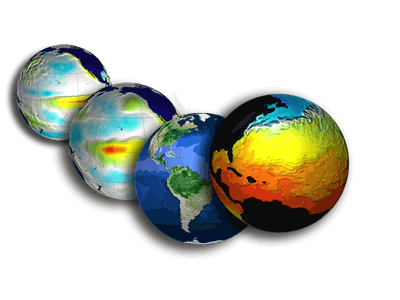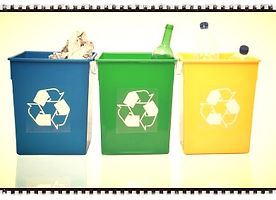Global Climate


S
At the Office
1. Manage your office equipment energy use better
Did you know that the total electricity consumed by idle electronics equals the
annual output of 12 power plants? Save energy and reduce greenhouse gas
emissions at work by setting your computer, monitor and other office equipment
to power down when not in use. Activate the power management features on
your computer and monitor, unplug laptop power cords when not in use and turn
off equipment and lights at the end of the day. Plugging everything into a power
strip makes it easy to shut everything down at one time.
2. Look for ENERGY STAR-qualified products for the office
Office products that have earned the ENERGY STAR feature special energy-efficient designs, which enable them to use less energy while performing regular tasks. Look for ENERGY STAR-qualified office equipment, such as computers, copiers, and printers, in addition to more than 60 product categories, including lighting, heating and cooling equipment, and commercial appliances.
3. Ask your office building manager if your building has earned the ENERGY STAR
Buildings can earn EPA's ENERGY STAR too! ENERGY STAR-labeled buildings provide safe, healthy, and productive environments that use about 35% less energy than average buildings. Their efficient use of energy also reduces the total operational cost of the building. Let your facility's maintenance department know about the ENERGY STAR buildings program, so they can learn how to improve your building's performance.
4. Use less energy for your commute
Switching to public transportation, carpooling, biking, or telecommuting, can save energy and reduce greenhouse gas emissions on your way to and from work. Encourage your employer to offer commuter benefits that address limited or expensive parking, reduce traffic congestion, improve employee recruiting and retention and minimize the environmental impacts associated with drive-alone commuting. If you do drive, find out the fuel efficiency of your vehicle at the Federal Fuel Economy website, and make more environmentally informed choices when purchasing your next vehicle by using EPA's Green Vehicle Guide.
5. Reduce, reuse, recycle
Reducing, reusing, and recycling at the office helps conserve energy, and reduces pollution and greenhouse gas emissions. Reduce, reuse, and recycle at the office by using two-sided printing and copying; only printing what you need; buying supplies made with recycled content; and recycling paper products, batteries, and used printer cartridges. All of these actions help conserve energy and reduce carbon pollution. For old electronics (e.g., computers, monitors, cell phones, TVs), investigate leasing programs, manufacturer and retailer take-back programs, and municipal programs and events to ensure reuse and recycling. You can also donate used equipment to schools or other organizations and take advantage of any available tax incentives for computer donations. Visit EPA's WasteWise website for information on starting a recycling program at work.
6. Use Green Power
Emissions from electricity generated from fossil fuels can be one of the most significant environmental impacts associated with your organization's operations. Green power is electricity that is generated from renewable energy sources such as wind, sun, geothermal, and biomass. Purchasing green power is an easy, effective way for your organization to reduce its carbon footprint and environmental impact. Visit EPA's Green Power Partnership for information on how to purchase green power.
7. Encourage your organization to develop a greenhouse gas inventory
On the road
Developing a greenhouse gas inventory is a critical first step toward measuring and managing your organization’s climate change impact. An inventory is a list of emission sources and the associated emissions quantified using standardized methods. Many organizations are taking this step and by doing so find that most of their emissions come from building heating and cooling, fleet vehicles, electricity use, and employee travel. EPA’s Center for Corporate Climate Leadership is a resource center to help all organizations identify and achieve cost-effective GHG emission reductions.
1. Buy smart: Purchase a fuel-efficient, low-greenhouse gas vehicle
When shopping for a new or used vehicle (or even renting a vehicle), choose the cleanest, most fuel-efficient vehicle that meets your needs. With a wide range of clean, fuel-efficient vehicles available today, it’s easier than ever to go green—for the environment, and for your wallet. Check out EPA's Green Vehicle Guide or www.fueleconomy.gov to find the best, most comprehensive information on vehicle emissions and fuel economy.
Gasoline Vehicle Label
You can also learn more about the fuel economy and environment label that you’ll see on all new vehicles. The label has been redesigned and updated for even easier comparison shopping. These new window stickers provide fuel economy and environmental ratings for all new vehicles, including advanced technology vehicles like electric cars and plug-in hybrids. And while at the showroom, you can scan the QR Code® on each vehicle’s label to be connected to additional information online, including personalized cost and energy-use estimates.
2. Drive smart
To improve your fuel economy and reduce greenhouse gas emissions, go easy on the brakes and gas pedal, avoid hard accelerations, reduce your time spent idling (no more than 30 seconds), and unload unnecessary items in your trunk to reduce weight. If you have a removable roof rack and you are not using it, take it off to improve your fuel economy. Use cruise control if you have it, and for vehicles with selectable four-wheel drive, consider operating in two-wheel drive mode when road conditions make it safe to do so.
For more information, take a look at these tips for driving more efficiently.
3. Remember maintenance...
Get regular tune-ups, follow the manufacturer’s maintenance schedule (which can be found in your owner’s manual), and use the recommended grade of motor oil. A well-maintained car is more fuel-efficient, produces fewer greenhouse gas emissions, is more reliable, and is safer!
For more details, including potential fuel savings, check out these tips for keeping your car in shape. Exit EPA Disclaimer
4. ... and don’t forget your tires!
Check your tire pressure regularly. Under-inflation increases tire wear, reduces your fuel economy, and leads to higher greenhouse gas and other air pollutant emissions. If you don’t know the correct tire pressure for your vehicle, you can find it listed on the door to your vehicle’s glove compartment, or on the driver's-side door pillar.
And when it’s time for new tires, consider purchasing tires with “low rolling resistance,” an energy-saving feature.
5. Give your car a break
Use public transportation Exit EPA Disclaimer , carpool Exit EPA Disclaimer , or walk or bike whenever possible to avoid using your car. Leaving your car at home just two days a week can reduce your greenhouse gas emissions by an average of two tons per year.
Also consider telecommuting (working from home via phone or the Internet), which can reduce the stress of commuting, reduce harmful emissions, and save you money. And when driving, try combining your errands and activities into one trip.
What you can do at School
Spread the word.
Give a presentation to your family, school, or community group that explains how their actions can cause or reduce climate change. You can use EPA's “Create a New Climate for Action” presentation (PowerPoint file, 51 pp, 32MB) or full–screen PDF (51 pp, 33MB); presenter notes (PDF) (51 pp, 5MB) or develop your own. Get creative, and think of more ways to help others make a difference!
College students: Get involved at your college or university
College students can play an important role in reducing greenhouse emissions at their colleges or universities by reducing their emissions from energy they use in dorm rooms. Students can also work with school administrators to develop an inventoryLink to EPA's External Link Disclaimer, increase energy efficiency on campus, and reduce their school's greenhouse gas emissions by using green power.
Educators
Teach students about climate change and ecosystems.
Use the teacher resources on EPA's Students Guide to Climate Change. Use the Climate Change, Wildlife and Wildlands: A Toolkit for Formal and Informal Educators Exit EPA Disclaimer to learn about the science of climate change and its potential effects on our nation's wildlife and their habitats. Download and share EPA's eight-page brochure, Frequently Asked Questions About Global Warming and Climate Change: Back to Basics (PDF) (8 pp, 1.6MB, About PDF), which provides illustrated answers to frequent questions.
Engage middle school students in estimating emissions
Enhance critical-thinking skills by introducing the Global Warming Wheel Card Classroom Activity Kit to middle school students. A hand-held wheel card and other resources help students estimate household greenhouse gas emissions in order to encourage students to think about ways they can reduce their personal, family, school, and community contributions to climate change. If you are an informal educator, simply use the Global Warming Wheel Card as a part of your field activities.
Learn from other educators
Investigate what other schools and organizations are doing to educate their audiences on climate change by clicking on Educators' Links, a database offering links to resources such as lesson plans, videos, books and toolkits.
Administrators
Reduce, reuse, recycle.
Recycle school or classroom paper, newspapers, beverage containers,
electronic equipment and batteries. Reducing, reusing, and recycling at
school and in the classroom helps conserve energy, and reduce pollution and
greenhouse gases from resource extraction, manufacturing, and disposal.
You can reduce, reuse, and recycle at school or in the classroom by using two-sided
printing and copying, buying supplies made with recycled content, and recycling used printer cartridges. For your old electronics, donate used equipment toother organizations, or investigate leasing programs to ensure that used equipment is reused and recycled.



